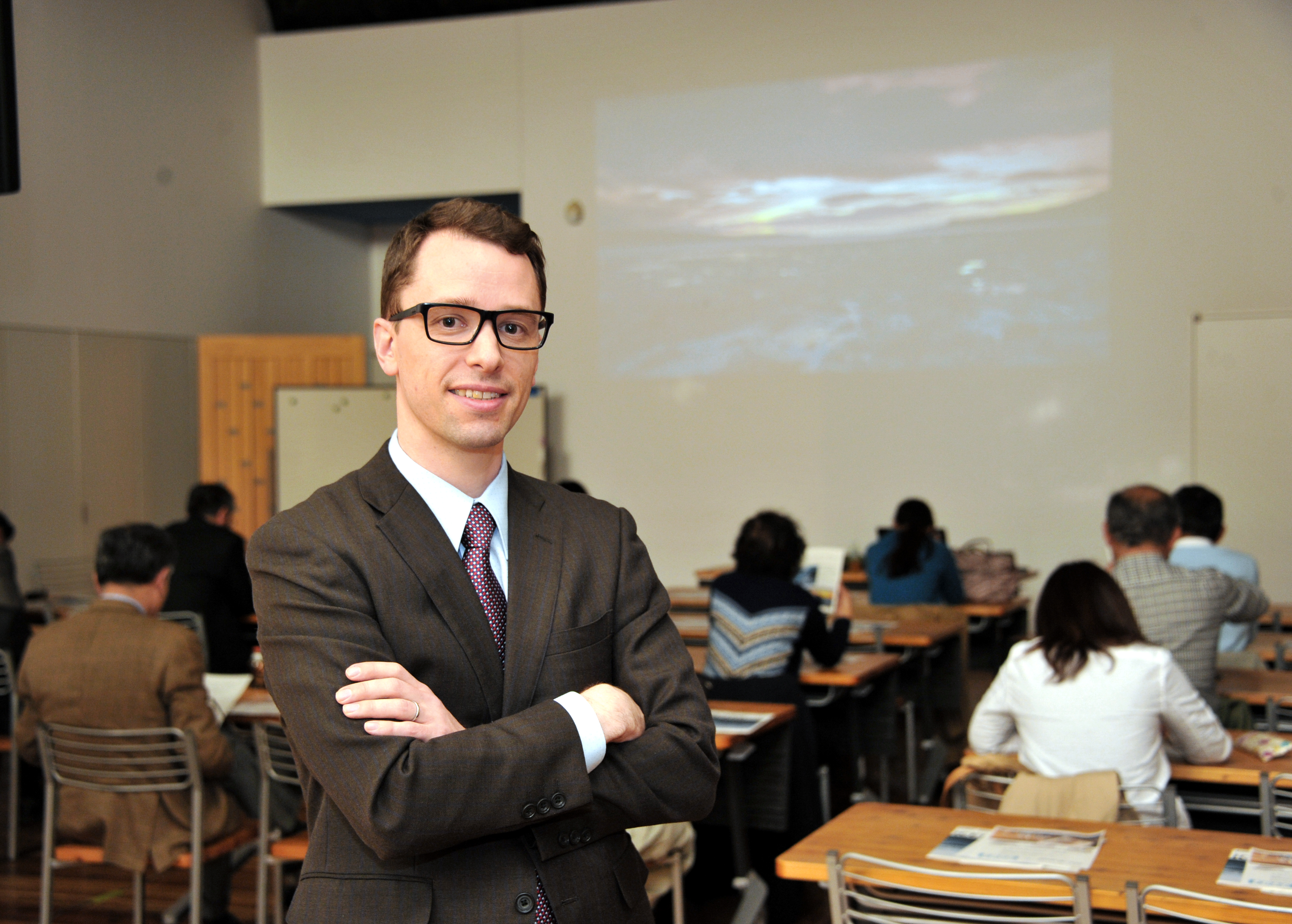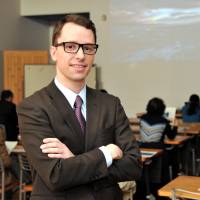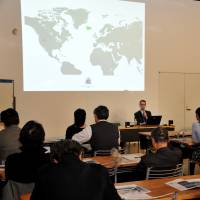As one of the most advanced countries in geothermal energy usage, Iceland recently shared some of its expertise with Japanese people at a seminar in Tokyo.
The event, the third session in a series of educational programs promoting eco-friendly lifestyles, took place on the evening of March 27. Co-organized by the Minato City Eco-Plaza and The Japan Times in collaboration with various embassies in Tokyo, the programs are aimed at providing people with an opportunity to learn about environmental ideas and eco-friendly lifestyles from around the world through different embassies, which serve as windows into each country.
On this occasion, the event was held in collaboration with the Embassy of the Republic of Iceland.
"In Iceland, geothermal generation facilities are found even in small villages and support the residents' everyday lives," said Halldor Elis Olafsson, the embassy trade representative, who served as speaker at the event.
Located between the North Atlantic and Arctic oceans, Iceland has a population of 320,000 and an area of 103,000 sq. km. As a volcanically and geologically active island, the country has used geothermal energy since the early 20th century.
"In 1930, a primary school in the capital of Reykjavik became the first building connected to district heating that used geothermally heated water. This was followed by neighboring houses, as well as hospitals and swimming pools," Olafsson explained.
The 1973 oil crisis served as the impetus for Iceland's full-fledged development of geothermal energy, including electricity generation. Today, geothermal energy accounts for about 70 percent of the country's energy consumption. While 39 percent of geothermal energy is used for electricity generation, 45 percent is used to heat buildings, accounting for 90 percent of the country's municipal heating needs. Geothermally heated water in Iceland is also used in greenhouses, fish farming, snow melting, pools, spas and other industries.
"Geothermal pools are major therapeutic outlets for Icelanders and have become part of our lifestyle," Olafsson said. "Many houses are directly connected to natural hot springs to use in everyday life."
According to a national survey, Iceland's total economic benefit from geothermal power was calculated to be about $480-830 million, which equaled four to six percent of the country's gross domestic product in 2010.
"Geothermal usage not only contributes to Iceland's economy, but also has provided a benefit to the country's tourism," Olafsson explained, showing a photo of Reykjavik in 1933, when the country used coal as its primary energy source and suffered from pollution problems. Olafsson then showed a recent photo of a lush and green capital, thanks to the change in their energy source.
Many of the country's geothermal power plants are located near national parks. This includes the Nesjavellir Geothermal Power Station, the country's second largest geothermal power station, which sits next to Thingvellir National Park, a UNESCO World Heritage site.
"The hot water from this power plant is delivered to the capital via pipeline. While providing cheap geothermal energy, Iceland has accumulated know-how on the coexistence of high-tech geothermal power plants alongside nature, which is Iceland's major tourism draw," Olafsson said.
One of the most notable outgrowths of Iceland's geothermal energy may be the Blue Lagoon, the most famous tourist destination in the country.
The Blue Lagoon was formed in 1976 during operations at the nearby geothermal power plant. In the years that followed, people began to bathe in the unique water, which is thought to have health benefits, and apply the silica mud to their skin, and the site has been innovative in harnessing this gift of nature to develop different spa services and products over the years. Today, the Blue Lagoon is a part of the Svartsengi Resource Park, which is home to five cutting-edge companies built on ecological balance, economic prosperity and social progress.
The seminar was attended by 30 people from Minato Ward and beyond, who were interested in the presentation done in fluent Japanese and the many beautiful images of Iceland. The participants enthusiastically asked questions on details of Iceland's geothermal energy usage and the current situation in Japan, highlighting a keen interest in geothermal energy, which is thought to be something Japan has in common with Iceland.
"It is said that only 0.1 percent of the stored heat in the crust of the Earth would satisfy global energy consumption for 10,000 years," Olafsson said. "It's our pleasure if we could contribute to the energy production of other countries, making use of the history and technology of Icelandic geothermal power generation," he said.
This feature is part of a series of environment educational programs co-organized by Minato City Eco-Plaza and The Japan Times in collaboration with embassies in Tokyo. For more information, call 03-5404-7764 or visit minato-ecoplaza.net.





















With your current subscription plan you can comment on stories. However, before writing your first comment, please create a display name in the Profile section of your subscriber account page.